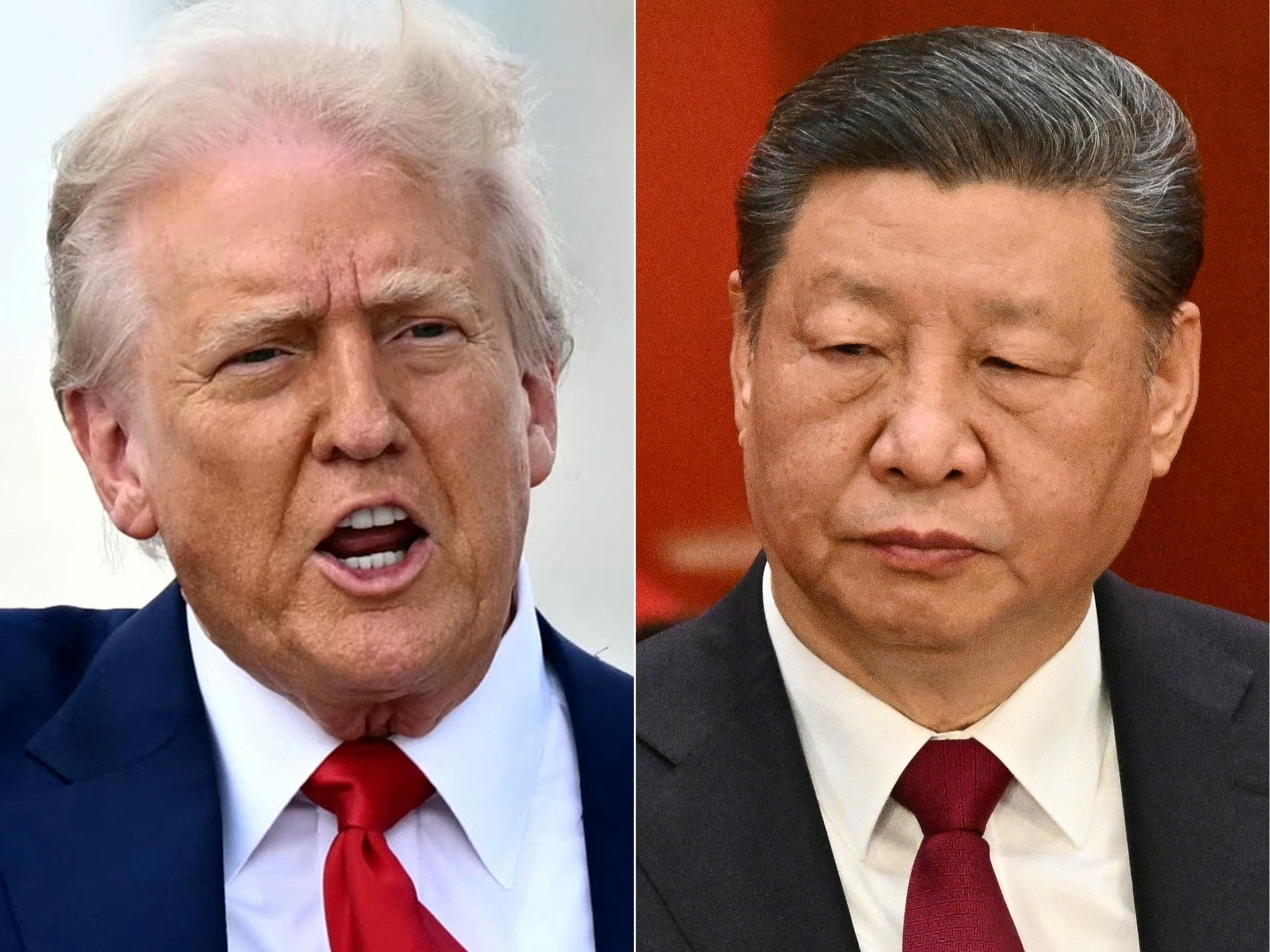China has warned nations against forming trade agreements with the United States at the expense of Beijing. This is escalating tensions in the ongoing trade dispute between the world’s two largest economies.
In reaction to reports that the Trump administration is pressuring countries to distance themselves from China, a spokesperson for China’s Ministry of Commerce stated on Monday that any nation aligning with the US against China “will face countermeasures in a resolute and reciprocal manner” from Beijing.
This warning comes ahead of negotiations with the US for exemptions from “reciprocal” tariffs that Trump imposed, and then later paused on for nearly 60 trading partners.
What’s behind this latest verbal dispute? How much influence does China exert in global trade? And can Trump create a divide between other countries and Beijing?
What’s the situation?
The Wall Street Journal reported that the Trump administration wants to use tariff discussions to persuade US economic partners to reduce their trade with China and limit Beijing’s dominance in manufacturing.
In exchange, these countries could secure reductions in US levies and trade obstacles. The Trump administration is in talks with more than 70 countries.
China’s Commerce Ministry responded, cautioning other nations that “seeking one’s own temporary selfish interests at the expense of others’ interests is to seek the skin of a tiger.” Essentially, it argued that countries that form deals with the US (the tiger) will ultimately be consumed by it themselves.
The ministry also stated that China would retaliate against any nations that sided with US pressure to damage Beijing.
What’s the status of US-China trade?
After Trump suspended his “reciprocal tariffs” on major US trading partners on April 9, he increased them on China. US trade levies on most Chinese exports have risen to 145 percent. Beijing has responded with its duties at 125 percent on US goods.
Trump has long accused China of exploiting the US in terms of trade, portraying his tariffs as necessary to revive domestic manufacturing and bring jobs back to the US. He also seeks to use tariffs to fund future tax cuts.
Chinese President Xi Jinping traveled to three Southeast Asian countries last week to strengthen regional ties. He urged trading partners, including Vietnam, to oppose unilateral bullying.
“Trade wars and tariff wars have no winners,” Xi stated in an article published in Vietnamese media without mentioning the US.
Many countries, including Vietnam, have found themselves caught in the crossfire of the trade war. Not only is Vietnam a manufacturing hub, but China also frequently uses it to ship exports to the US and avoid tariffs imposed by the first Trump administration on Beijing in 2018.
The Trump administration has started discussing tariffs with East Asian allies. A Japanese delegation visited Washington, DC last week, and South Korean officials plan to follow this week.
Many countries now find themselves squeezed between the world’s two greatest economies—China, a significant source of manufactured goods and a key trading partner, and the US, an essential export market.

How reliant is the world on Chinese exports?
In a report released in January, the Lowy Institute, a Sydney-based think tank, found that about 70 percent of countries imported more from China than from the US in 2023.
China’s rapid rise as a trading superpower is traceable to 2001, the year it joined the World Trade Organization (WTO) and began dominating global manufacturing after years of successful protectionist industrial policies.
China profited during the 2000s from the relocation of international supply chains, boosted by significant inflows of foreign investment, large pools of low-cost labor, and an undervalued currency exchange rate.
By 2023, China was the largest trading partner for at least 60 countries, nearly twice the number for the US, which was the largest trading partner for 33 economies.
The gap between them is also widening in many countries: The Lowy Institute analysis showed that in 2023, 112 economies traded more than twice as much with China as with the US, up from 92 in 2018 during Trump’s first trade war.
“China’s critical dependence across the world, particularly in Asia, means that many [trading partners] cannot do without China,” said Alicia Garcia-Herrero, an economist at the investment bank Natixis. From critical minerals to silicon chips, Chinese exports are almost irreplaceable.
Has world trade shifted more in China’s favor since Trump’s last trade war?
In 2018, two years into his first term, Trump imposed 15 percent tariffs on more than $125bn worth of Chinese goods, including footwear, smartwatches, and flat-screen TVs.
Since then, the US has become an even more important source of demand for non-Chinese exports, especially from Mexico and Vietnam, reflecting the impact of US tariffs on China over the years.
However, if part of Trump’s aim was to harm Beijing, his opening salvos failed.
Since 2018, many more countries have deepened their trade ties with China – at the expense of the US.
When China joined the WTO, over 80 percent of countries traded more with the US than with China. This figure had dropped to just 30 percent by 2018, the year of Trump’s first tariffs on China, according to the Lowy Institute analysis.
That trend has only intensified since then: 139 countries traded more with China than with the US in 2018. By 2023 that number had increased to 145, and about 70 percent of the world’s economies now trade more with China than with the US – up from just 15 percent in 2001.
“Trump doesn’t seem to comprehend how significant Chinese trade flows have become,” Garcia-Herrero told Al Jazeera. “Moreover, he’s not offering much in the form of incentives, like more investment, so I don’t believe he’ll achieve what he wants.”
Can countries afford to estrange China on trade?
According to Garcia-Herrero, some countries, like Mexico, which has particularly deep trade links with the US, probably “will say no to Chinese imports”.
However, she noted that “China’s presence in supply chains is so significant for most of America’s other trading partners that detaching is virtually unachievable.”
Indeed, around the globe, China has emerged as an essential source of imports. For instance, the European Union had a trade deficit with China valued at €396 billion ($432bn) in 2022, up from €145 billion ($165bn) in 2016.
China makes up 20 percent of EU goods imports. The corresponding figure in Great Britain is 10 percent. Rachel Reeves, the Treasury Secretary, stated last week that it would be “very foolish” for the UK to reduce trade with China.
In the developing world, China’s trade role is equally crucial. Roughly a quarter of Bangladesh’s and Cambodia’s total imports come from China. Nearly a fifth of Nigeria’s and Saudi Arabia’s goods imports originate from China.
“Trump’s trade policy is shortsighted,” Garcia-Herrero stated. “Prying trade away from China might work in countries where the US has military bases. … They may have to accept the US’s concerns.”
“But for most countries, particularly in the Global South, the more Trump threatens, the more countries will side with China.”









